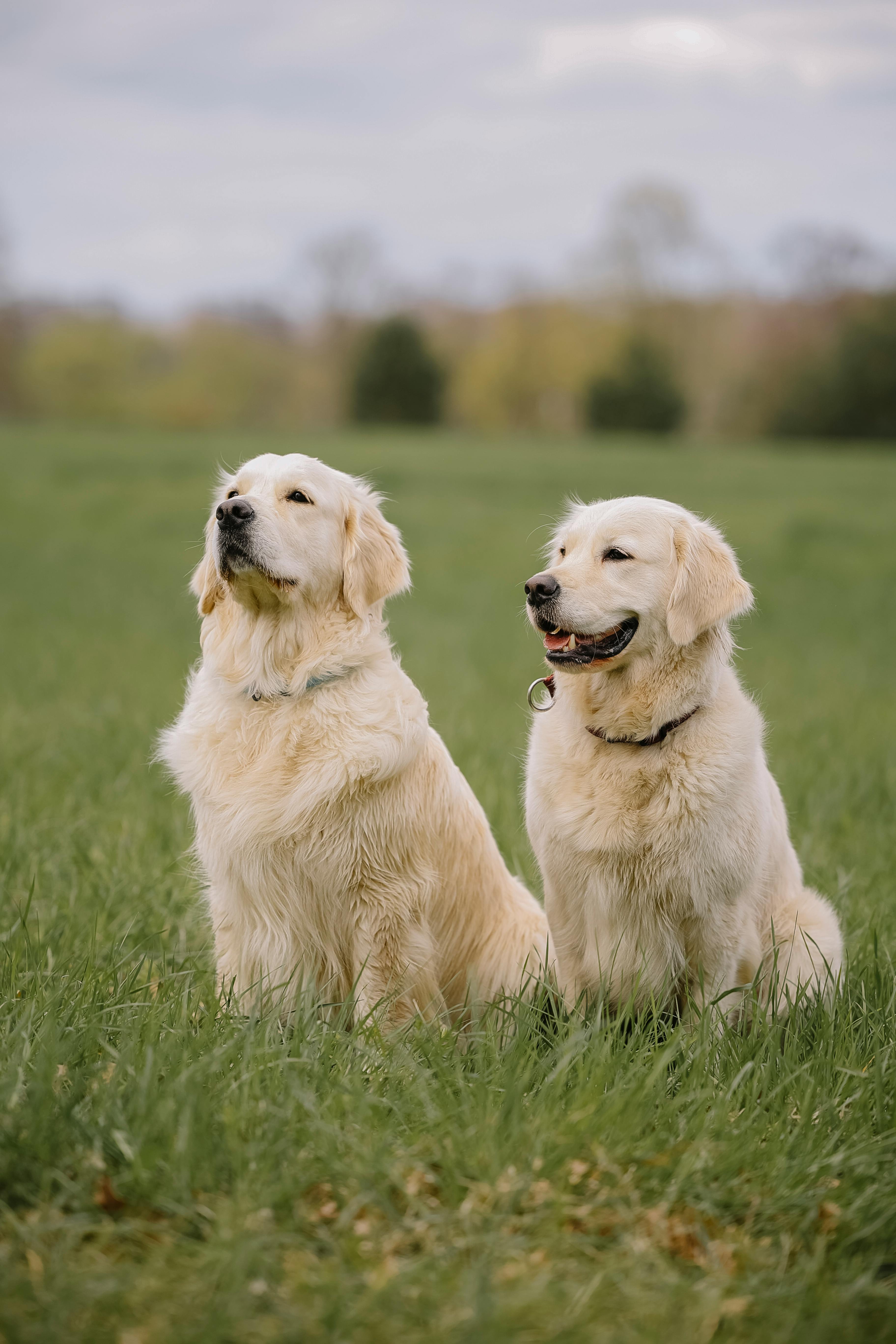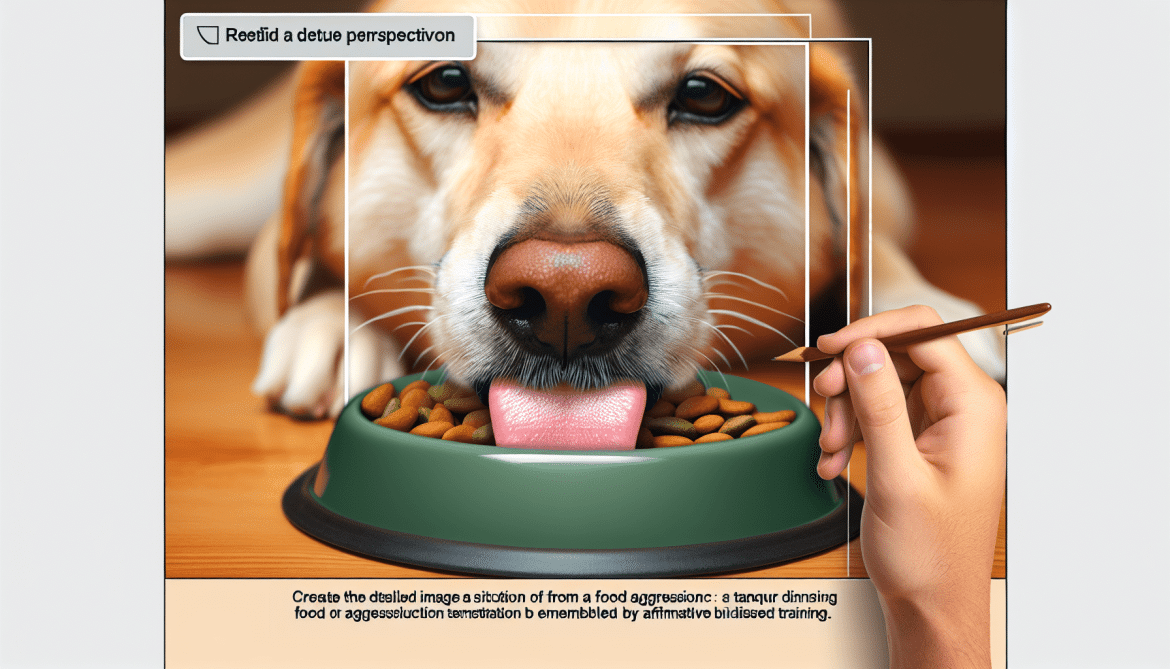Are you struggling with a furry friend who becomes aggressive when it comes to food? Well, fret not because there is a solution! In this article, we will explore the incredible benefits of reward-based training for eliminating food aggression. By using positive reinforcement techniques, you can transform your pet's behavior and create a harmonious mealtime environment. Say goodbye to mealtime tension and hello to a more peaceful and enjoyable dining experience for both you and your furry companion.
What is Food Aggression?
Food aggression refers to a behavior exhibited by some dogs where they become possessive, defensive, or even aggressive when it comes to their food. This can manifest in various ways, such as growling, snapping, or even biting when someone approaches their food bowl or attempts to take their food away.
Definition of Food Aggression
Food aggression, also known as resource guarding, is a type of aggressive behavior displayed by dogs when they feel their access to valuable resources, such as food, is being threatened. This behavior stems from a primal instinct to protect their resources, as they perceive them as essential for their survival.
Causes of Food Aggression
There can be several underlying causes of food aggression in dogs. These may include:
- Genetics: Some dogs may be genetically predisposed to exhibit resource guarding behaviors.
- Lack of socialization: Dogs who have not been properly socialized with humans or other animals may be more prone to developing food aggression.
- Past experiences: Dogs that have experienced starvation or competition for food in the past may develop food aggression as a means of ensuring their access to food.
- Fear or anxiety: Dogs who feel threatened or anxious due to their environment or previous experiences may exhibit food aggression as a defensive response.
- Lack of training: Dogs that have not received adequate training on proper behavior around food may resort to aggression to assert their control.
Why is Food Aggression a Problem?
Food aggression can present several problems, both in terms of safety concerns and societal challenges.
Safety Concerns
Food aggression poses a significant safety risk, not only to humans but also to other animals present in the household. Aggressive behavior, such as growling or biting, can result in physical harm and potential injuries, particularly if young children or vulnerable individuals are involved. The unpredictable nature of food-aggressive dogs can make them a liability in any social setting.
Societal Challenges
Food aggression can create challenges within the household and the wider community. It can affect the overall harmony and peace within the family, causing tension and stress among family members. Additionally, if the aggression extends beyond the household, it can lead to conflicts with neighbors, visitors, or other dogs in public spaces. This can isolate the dog and limit its ability to participate in social activities, ultimately compromising its well-being.

This image is property of images.pexels.com.
Understanding Reward-based Training
Reward-based training is a positive and effective approach to addressing and eliminating food aggression in dogs. It focuses on reinforcing desirable behaviors through rewards, such as treats, praise, or play, rather than using punishment or force.
Principles of Reward-based Training
Reward-based training follows key principles to create a positive and successful training experience:
- Positive reinforcement: This involves rewarding desired behaviors, such as calm behavior around food, to increase the likelihood of the behavior being repeated.
- Consistency: Consistency in training methods, cues, and rewards helps the dog understand what is expected of them and promotes faster learning.
- Timing: Rewards should be given immediately after the desired behavior to clearly associate the behavior with the reward.
- Gradual progression: Training should progress gradually, starting with easier tasks and gradually increasing the difficulty as the dog becomes more comfortable and proficient.
- Individualization: Recognizing that each dog is unique and tailoring the training approach to their specific needs and temperament.
Benefits of Reward-based Training
Reward-based training has numerous benefits when it comes to addressing food aggression. These include:
- Building a positive relationship: Reward-based training focuses on creating a bond based on trust and cooperation between the dog and the handler, promoting a positive relationship.
- Stress reduction: By using positive reinforcement instead of punishment, reward-based training helps reduce stress and anxiety in dogs, making the training experience more enjoyable for them.
- Long-lasting behavior change: Reward-based training focuses on teaching the dog alternative behaviors, encouraging them to make the right choices consistently, leading to long-lasting behavior change.
- Strengthening communication: Reward-based training promotes effective communication between the dog and the handler, enhancing understanding and ensuring a smooth training process.
- Enhancement of overall obedience skills: Beyond addressing food aggression, reward-based training can also improve a dog's overall obedience and responsiveness to commands.
Step-By-Step Guide to Reward-based Training
When dealing with food aggression in dogs, a step-by-step approach can be helpful in gradually eliminating the unwanted behavior and replacing it with more positive responses.
Assessing the Severity of Food Aggression
The first step in addressing food aggression is to assess the severity of the behavior. This involves observing the dog's behavior during feeding time and noting any signs of aggression or possessiveness. It is essential to document specific behaviors, such as growling, snapping, or biting, to understand the extent of the aggression.
Developing a Positive Reinforcement Plan
Once the severity of the food aggression has been determined, a positive reinforcement plan can be developed. This plan should include clear goals and strategies to address the aggression. It may involve teaching the dog alternative behaviors, such as sitting or staying calmly while being fed.
Setting Up Controlled Feeding Environments
Creating a controlled feeding environment is crucial to successfully manage and modify food aggression. This may involve feeding the dog in a separate room or using barriers to create distance between the dog and others during feeding. By gradually reducing the triggers that contribute to the aggression, the dog can learn to associate mealtime with a positive and calm experience.
Teaching Basic Behavioral Commands
As part of the training process, teaching basic behavioral commands, such as "sit," "stay," or "leave it," can be beneficial in redirecting the dog's attention and focusing their energy on more appropriate behaviors. These commands can help establish boundaries and reinforce obedience during feeding time.
Implementing Rewards for Desirable Behavior
During training, it is essential to consistently reward the dog for exhibiting desirable behaviors, such as remaining calm or responding to commands. This can be done through a variety of rewards, including treats, verbal praise, or play. The rewards should be rewarding enough to motivate the dog and reinforce the desired behavior effectively.

This image is property of images.pexels.com.
Choosing Appropriate Rewards for Training
Choosing the right rewards for training is crucial in maintaining the dog's motivation and engagement. Dogs have individual preferences when it comes to rewards, so it is essential to understand what motivates your dog and use those rewards accordingly.
Different Types of Rewards
There are various types of rewards that can be used during training, including:
- Treats: Food rewards, such as small, easily consumable treats, are often effective motivators for dogs.
- Verbal praise: Dogs appreciate the sound of their owner's voice and respond well to positive verbal reinforcement, such as praise or encouragement.
- Play: Many dogs are highly motivated by play, so incorporating a short play session as a reward can be highly effective.
- Affection: Some dogs thrive on physical affection, so gentle petting or a belly rub can be a rewarding experience for them.
Finding Motivating Rewards for Your Dog
Understanding what truly motivates your dog is key in selecting the most effective rewards. Each dog is unique, so it may take some trial and error to discover what rewards your dog finds most motivating. It can be helpful to experiment with a variety of treats, toys, and praise to gauge their response and identify the rewards that elicit the most positive reactions.
Avoiding Punishment in Training
Punishment-based training methods are not recommended when dealing with food aggression or any other behavioral issues. Punishment can have negative effects on the dog's well-being and can potentially escalate aggressive behaviors.
Negative Effects of Punishment
Using punishment as a training tool can have several negative consequences:
- Fear and anxiety: Punishment can create fear and anxiety in dogs, leading to increased stress levels and potentially worsening the aggression.
- Breakdown of trust: Dogs may lose trust in their owners if they associate them with punishment. This can deteriorate the bond and hinder the training process.
- Aggressive escalation: Punishment can trigger an escalation of aggressive behaviors, as the dog may feel cornered or threatened, leading to potential bites or attacks.
- Inhibition of learning: Dogs subjected to punishment during training may become hesitant to try new behaviors, thus inhibiting their ability to learn and adapt.
Building Trust Through Positive Reinforcement
Positive reinforcement, on the other hand, helps build trust between the dog and the owner. By focusing on rewarding desirable behaviors and avoiding punishment, the dog learns to associate training with positive experiences and willingly engages in the learning process.

This image is property of images.pexels.com.
Consistency and Patience in Training
Achieving behavior change takes time, consistency, and patience. Reward-based training requires a commitment to consistently apply the chosen training techniques and cues while maintaining patience throughout the process.
Establishing Consistent Training Techniques
Consistency is key when it comes to training your dog to overcome food aggression. This includes using consistent cues, rewards, and expectations to avoid confusion. All family members should be on the same page and follow the established training techniques to ensure the dog receives consistent messages.
Understanding the Time and Effort Required
Working with a dog exhibiting food aggression requires time and effort. It is important to understand that progress may not occur overnight and that setbacks or challenges are a normal part of the process. Patience and persistence are essential in achieving long-term behavioral change.
Dealing with Setbacks and Challenges
During the training process, it is common to encounter setbacks or challenges. Recognizing these setbacks and having strategies to address them can help maintain progress and prevent frustration.
Recognizing Signs of Regression
Regression in training can occur for various reasons, such as changes in the dog's environment, health issues, or lapses in consistency. It is important to recognize the signs of regression, such as increased aggression or reluctance to engage in training, and identify any potential triggers. This allows for timely intervention and adjustment of the training plan as needed.
Seeking Professional Help if Needed
If the food aggression persists or becomes increasingly problematic, seeking professional help from a certified dog trainer or animal behaviorist may be necessary. These professionals possess the knowledge and experience to assess the situation and provide tailored guidance and training techniques to address the specific challenges being faced.
Long-Term Management of Food Aggression
Successfully addressing food aggression requires ongoing management even after initial progress has been made. This helps maintain the desired behavior and prevent any potential regression.
Maintaining a Positive Environment
Creating and maintaining a positive environment is crucial in managing food aggression in the long term. This includes consistently using the reward-based training techniques, establishing clear boundaries, and ensuring a calm, stress-free feeding environment for the dog.
Continuing Training and Reinforcement
Consistent training and reinforcement are key to sustaining the progress achieved in addressing food aggression. Regularly practicing the learned behaviors and providing rewards for appropriate behavior ensures that the dog continues to associate mealtime with positive experiences. Ongoing training and reinforcement also help further strengthen the bond between the dog and the owner.
Conclusion
Reward-based training offers an effective and compassionate approach to addressing food aggression in dogs. By understanding the underlying causes, employing positive reinforcement techniques, and maintaining consistency, it is possible to eliminate food aggression and develop a stronger bond between dog and owner. While the process requires time, patience, and commitment, seeking professional help when needed and remaining persistent can lead to long-lasting behavior change. As pet owners, it is our responsibility to provide a safe and harmonious environment for our dogs, and addressing food aggression through reward-based training is a crucial step towards achieving that goal. So, don't hesitate to seek help, be patient, and start the journey towards a peaceful mealtime for both you and your four-legged friend.


